0 / 32
0 / 32
The Spiritual side of Muay Thai: Strength, Protection, Focus
December 13, 2024
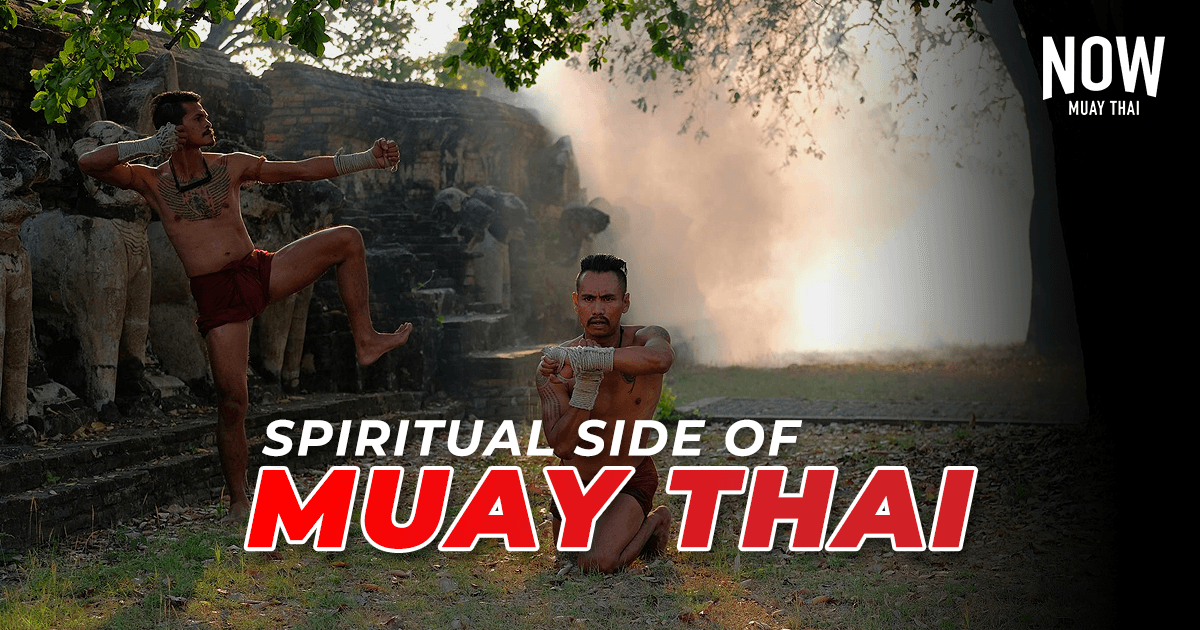
Muay Thai, often known as the "Art of Eight Limbs," is not only a physically demanding sport but also a martial art rich in cultural and spiritual significance. Over the centuries, Muay Thai has evolved, blending physical combat with deep spiritual and cultural roots. The spiritual side of Muay Thai continues to play an integral role in the practice today, with sacred rituals, beliefs, and spiritual protection forming the foundation of the art. These spiritual elements are just as essential as the physical techniques, creating a balance that defines the unique essence of Muay Thai.
The Spiritual Side of Muay Thai: A Deep Connection to Thai Culture
Muay Thai’s evolution has seamlessly integrated cultural and spiritual elements, blending physical combat with the ethical, spiritual, and artistic traditions of Thailand. It is a reflection of Thai culture, incorporating beliefs in spirituality, sacred chants, music, literature, ethics, and virtues, all of which continue to influence and shape the practice of Muay Thai. Core traditions such as the Wai Kru Ritual, Muay Kard Chuek, and the music of the Pi Muay flute play a crucial role in preserving the spiritual heritage of Muay Thai, while also fostering the mental and emotional development of its practitioners.
Muay Thai as a Combat Sport with Spiritual Roots
Muay Thai stands out from other combat sports due to its profound cultural and spiritual foundation. It’s not just about fighting - it’s about respect, discipline, and honor. Initially developed to prepare young men for battle, Muay Thai was a means of self-defense and a way to protect the country. The spiritual side of the art teaches practitioners to defend themselves, honor tradition, and grow both physically and morally. Muay Thai embodies the philosophy that the true essence of the art is not just about fighting but also about becoming a better person.
The spiritual and moral aspects of Muay Thai are reflected in the relationship between the Kru (teacher) and the student. The Kru is more than just a technical instructor; they are the spiritual guide who imparts the values of sportsmanship, integrity, and respect. Fighters are taught not to use their skills to harm others unjustly but to protect the weak and uphold fairness. This bond between the teacher and student is solidified in the Wai Kru ritual, where the fighter honors the teacher and the traditions of Muay Thai.
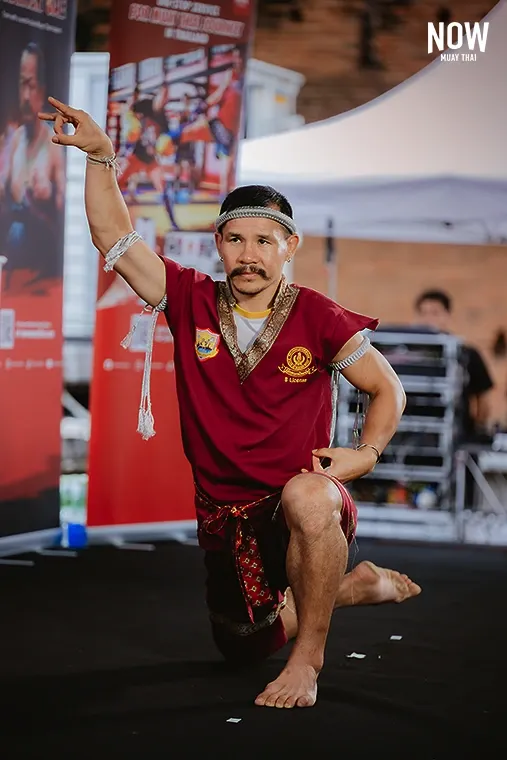
A Muay Thai instructor demonstrating the Wai Kru dance, reflecting the rich Thai culture and contributing to the art's holistic approach to strength, focus, and mental resilience, as well as the respect for the teacher (Kru).
The Wai Kru Ritual: Honoring Tradition and Spirit
The Wai Kru ritual is one of the most significant spiritual practices in Muay Thai. It is a sacred act in which the fighter shows respect to their teacher (Kru) and the art of Muay Thai itself. The ritual involves a series of movements, including prayers and symbolic gestures, meant to center the mind and invoke protection from the spirits before entering the ring. The Wai Kru is not just a ceremonial formality - it is a deeply spiritual practice that helps the fighter connect with the spirit of the art and focus their energy for the battle ahead.
Muay Thai’s Evolution and Preservation of Spiritual Traditions
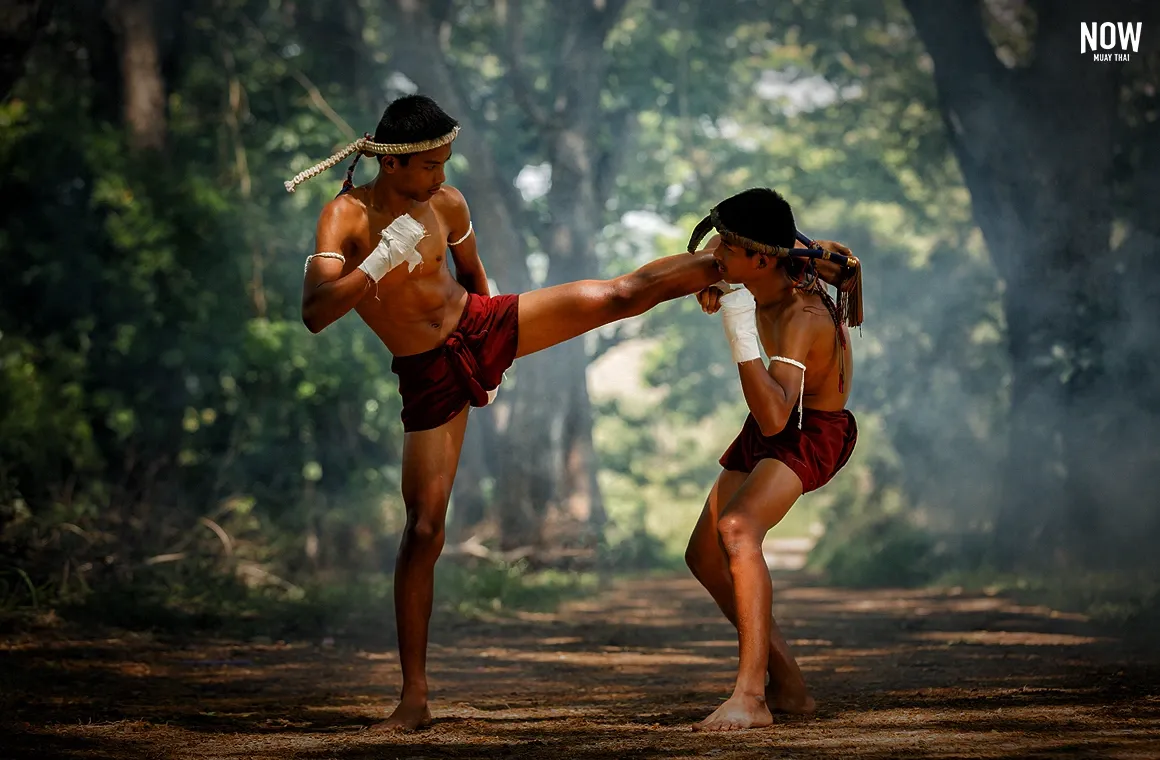 In the image, a Muay Thai fighter wearing traditional Muay Kard Chuek is engaged in ancient combat, with a Mongkhon on the head and Pra Jiad arm bands, performing the Wai Kru ritual before the fight.
In the image, a Muay Thai fighter wearing traditional Muay Kard Chuek is engaged in ancient combat, with a Mongkhon on the head and Pra Jiad arm bands, performing the Wai Kru ritual before the fight.
As Muay Thai has evolved over time, it has aligned with modern sports standards, incorporating elements from Western boxing, such as the use of gloves instead of traditional hand wraps. However, the spiritual identity of Muay Thai remains intact. Practices such as the Mongkhon (headband), Pra Jiad (arm bands), and the Wai Kru ritual continue to be essential parts of the sport. These items, along with Muay Kard Chuek (traditional hand wraps), serve as symbols of respect, protection, and spiritual connection.
In the past, the Muay Kard Chuek served as a unique identifier for different schools of Muay Thai. Each school had its own way of wrapping the cords, signifying their distinct style and traditions. For example, Muay Korath wrapped the cord down to the elbows, while Muay Chaiya wrapped it deeply to the wrists. The Muay Lopburi school is known for its distinctive low stance and tight footwork, using quick and strategic movements to deliver powerful strikes. In contrast, Muay Tha Sao is recognized for its unique approach to the Wai Kru ritual and fighting stance. A Muay Tha Sao fighter’s stance is wide, with weight shifted backward, and the front foot lightly touching the ground, providing stability and balance. These traditions not only reflect the cultural identity of each style but also provide spiritual protection to the fighter during combat.
The Sacred Talismans of Muay Thai: Spiritual Protection and Tradition
Muay Thai, as an integral part of Thai culture, carries with it a rich history of spiritual beliefs and practices that have been passed down through generations. For centuries, amulets and talismans have been an essential part of a Muay Thai fighter's preparation, offering not only physical protection but also spiritual strength. These sacred objects are deeply intertwined with the tradition of Muay Thai and continue to be a key aspect of the sport's spiritual side.
1. Mongkhon (Headband)
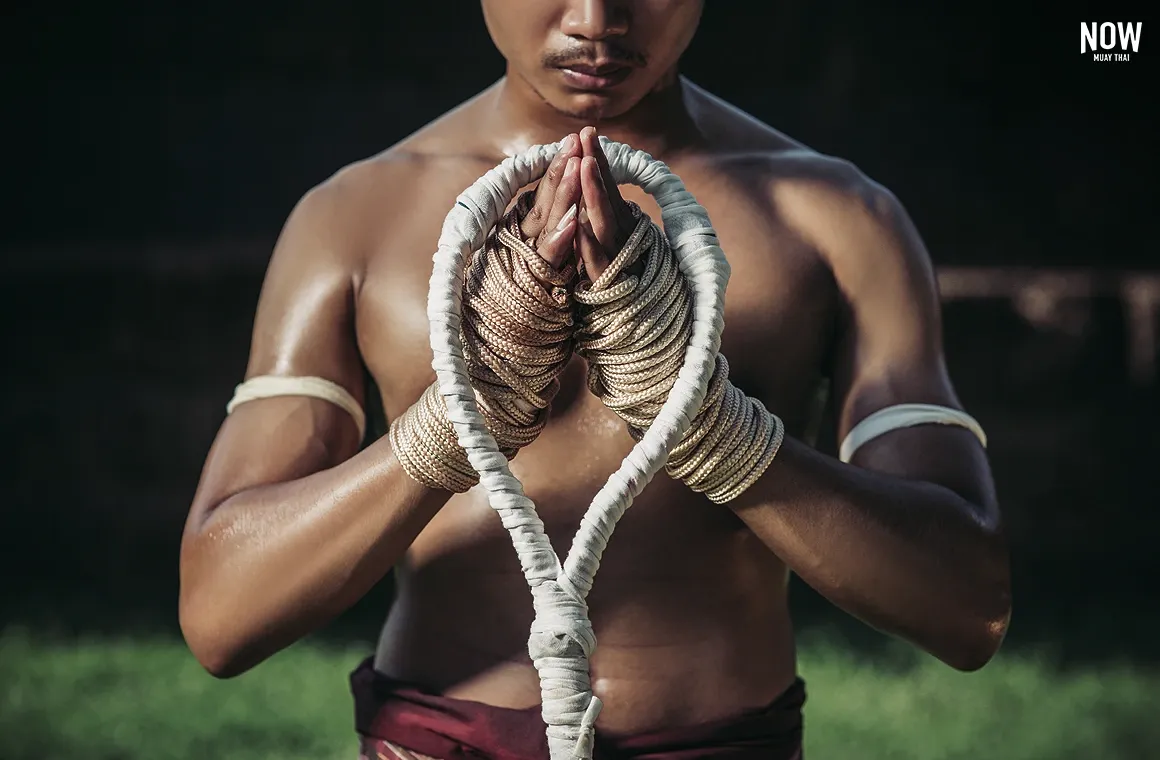 Mongkhon's properties, a sacred headband worn by Muay Thai fighters, believed to provide spiritual protection, strength, and connection to the art's traditions.
Mongkhon's properties, a sacred headband worn by Muay Thai fighters, believed to provide spiritual protection, strength, and connection to the art's traditions.
The Mongkhon is a sacred headband worn by Muay Thai fighters during their training and fights. Traditionally crafted by spiritual teachers or monks, the Mongkhon is often blessed with sacred inscriptions or mantras. The headband serves as a symbol of respect for the art of Muay Thai and the teacher (Kru), and it is believed to offer protection and spiritual strength to the wearer. Historically, it was considered essential for fighters to wear the Mongkhon during their matches, and if it were to fall off during a fight, it was customary for the opponent to stop the fight to allow the fighter to reattach it.
In the past, the creation of these talismans involved intricate rituals. Some believed that the most powerful Mongkhons were made using the "Ouroboros" (the snake eating its own tail), symbolizing eternal strength and spiritual power. These Mongkhons were crafted with special materials and immersed in sacred rituals to invoke protection, strength, and resilience.
2. Pra Jiad (Arm Bands)
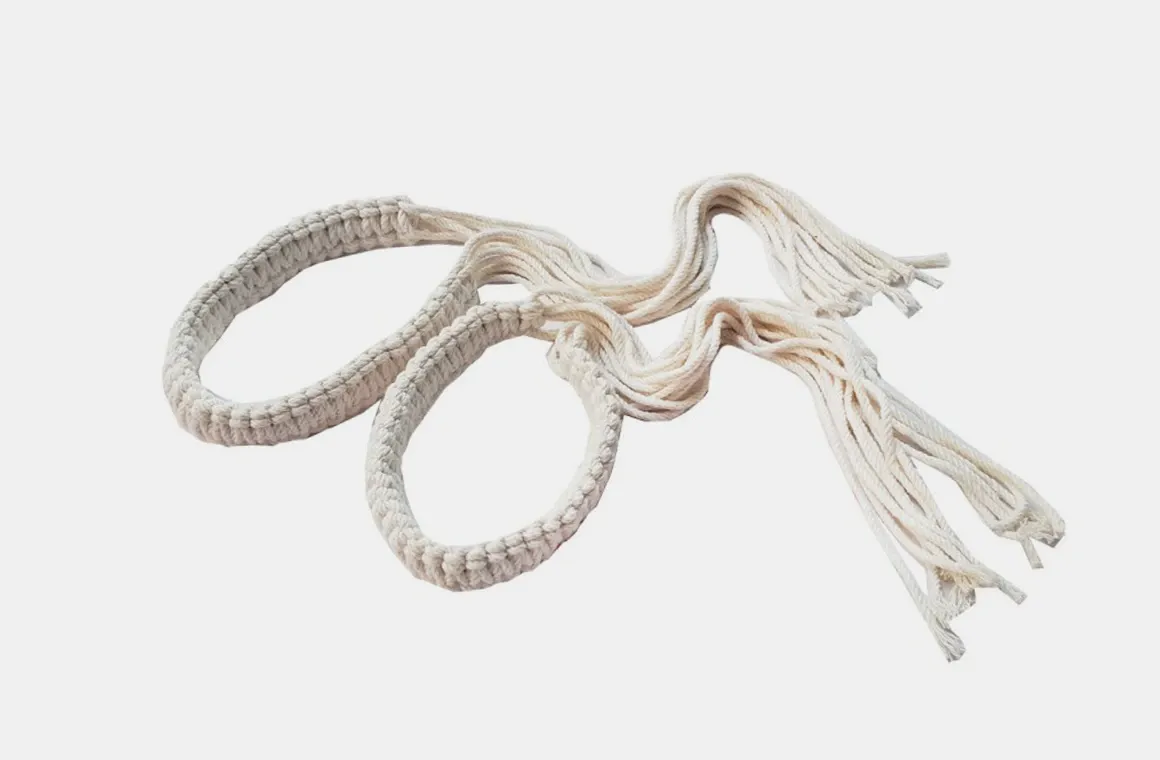 Pra Jiad (arm bands), a spiritual accessory worn by Muay Thai fighters, believed to provide protection, strength, and enhance resilience during combat, as well as connect the fighter to the art’s traditions.
Pra Jiad (arm bands), a spiritual accessory worn by Muay Thai fighters, believed to provide protection, strength, and enhance resilience during combat, as well as connect the fighter to the art’s traditions.
The Pra Jiad (arm bands) are another form of spiritual protection used by Muay Thai fighters. Typically made from cloth, these arm bands are inscribed with sacred symbols or mantras by skilled monks or spiritual leaders. The Pra Jiad is worn around the arms, often during fights, to provide protection and power. It is believed to shield the wearer from harm and empower them with resilience, allowing them to withstand the physical and mental challenges of a fight.
In addition to being worn during training and competition, the Pra Jiad can also be placed on the fighter’s altar for worship, further emphasizing the spiritual connection to the practice of Muay Thai.
3. Takrud (Metal Inscriptions)
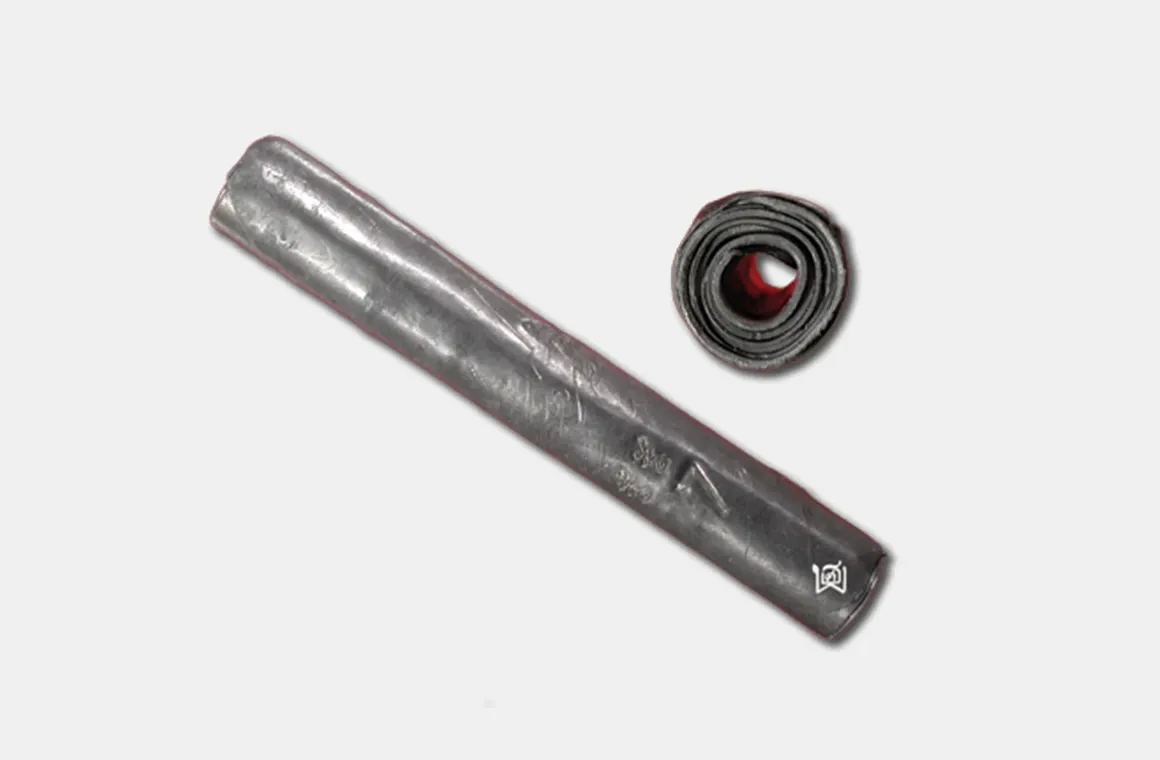 Takrud, a traditional Thai amulet made from metal or palm leaves, inscribed with sacred symbols or mantras. Believed to offer protection and strength, the Takrud is widely used in Thai culture, not only by Muay Thai fighters but also by individuals seeking spiritual guidance and protection in daily life.
Takrud, a traditional Thai amulet made from metal or palm leaves, inscribed with sacred symbols or mantras. Believed to offer protection and strength, the Takrud is widely used in Thai culture, not only by Muay Thai fighters but also by individuals seeking spiritual guidance and protection in daily life.
The Takrud is a small metal inscription or amulet that is often worn by Muay Thai fighters as a form of protection. These metal sheets, inscribed with sacred symbols or mantras, are believed to imbue the wearer with invincibility and strength. The Takrud is often blessed by a monk or spiritual leader before being given to the fighter. It is said to provide spiritual protection, enhancing the fighter's endurance and resilience in the ring.
The use of Takrud is deeply rooted in Thai spiritual traditions, where they are considered powerful tools for protection and invulnerability, safeguarding the fighter from harm during intense physical confrontations.
4. Sak Yant (Sacred Tattoos)
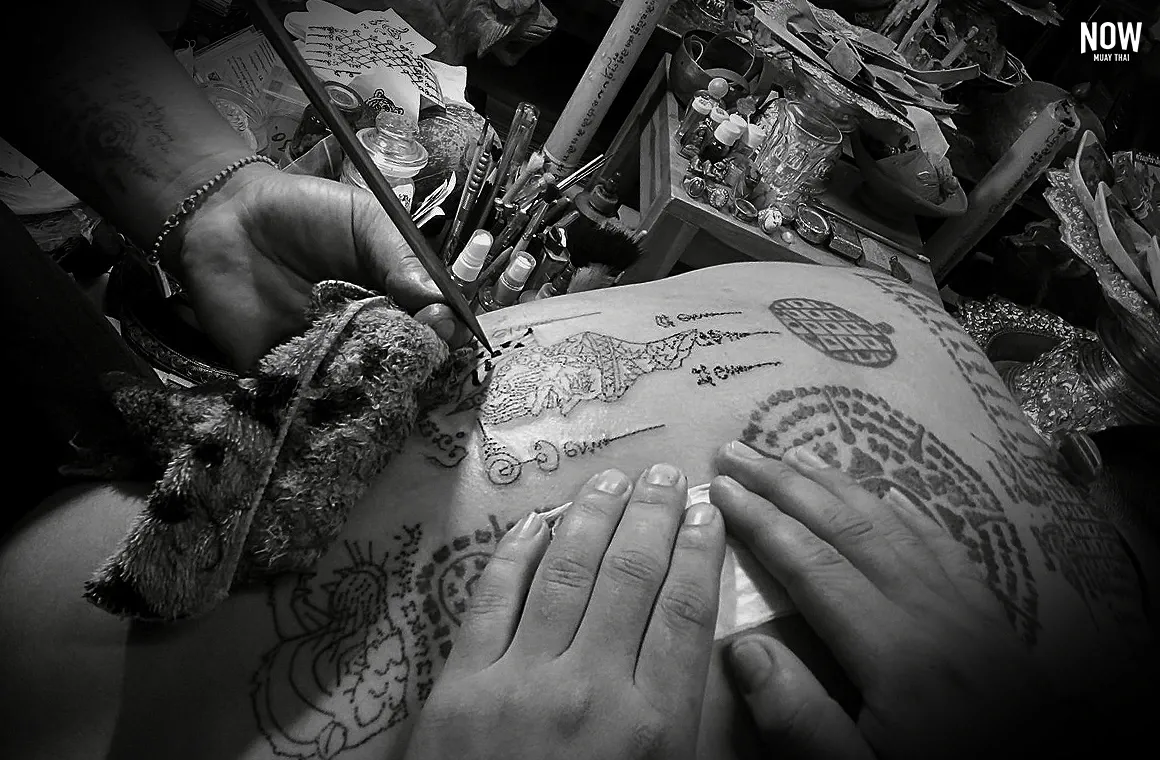 The belief in Sak Yant tattoos, a traditional form of sacred tattooing in Thailand, passed down through generations. These tattoos are thought to provide spiritual protection, strength, and blessings, with each design carrying its own unique mantra and significance._
The belief in Sak Yant tattoos, a traditional form of sacred tattooing in Thailand, passed down through generations. These tattoos are thought to provide spiritual protection, strength, and blessings, with each design carrying its own unique mantra and significance._
Sak Yant tattoos are another form of spiritual protection for Muay Thai fighters. These tattoos are often applied by experienced monks or spiritual leaders, and each design is imbued with its own unique mantra and spiritual significance. Fighters believe that these tattoos grant them protection, physical strength, and mental clarity. The Sak Yant tattoos are not only seen as a form of physical protection but also as a spiritual blessing that enhances the fighter's mental fortitude.
The process of receiving a Sak Yant tattoo is a deeply spiritual experience, where the fighter undergoes a ritual that connects them with the spiritual realm. The tattoo’s power is believed to enhance the fighter’s connection to their own inner strength and their spiritual journey.
5. Phra Kruang (Sacred Amulets)
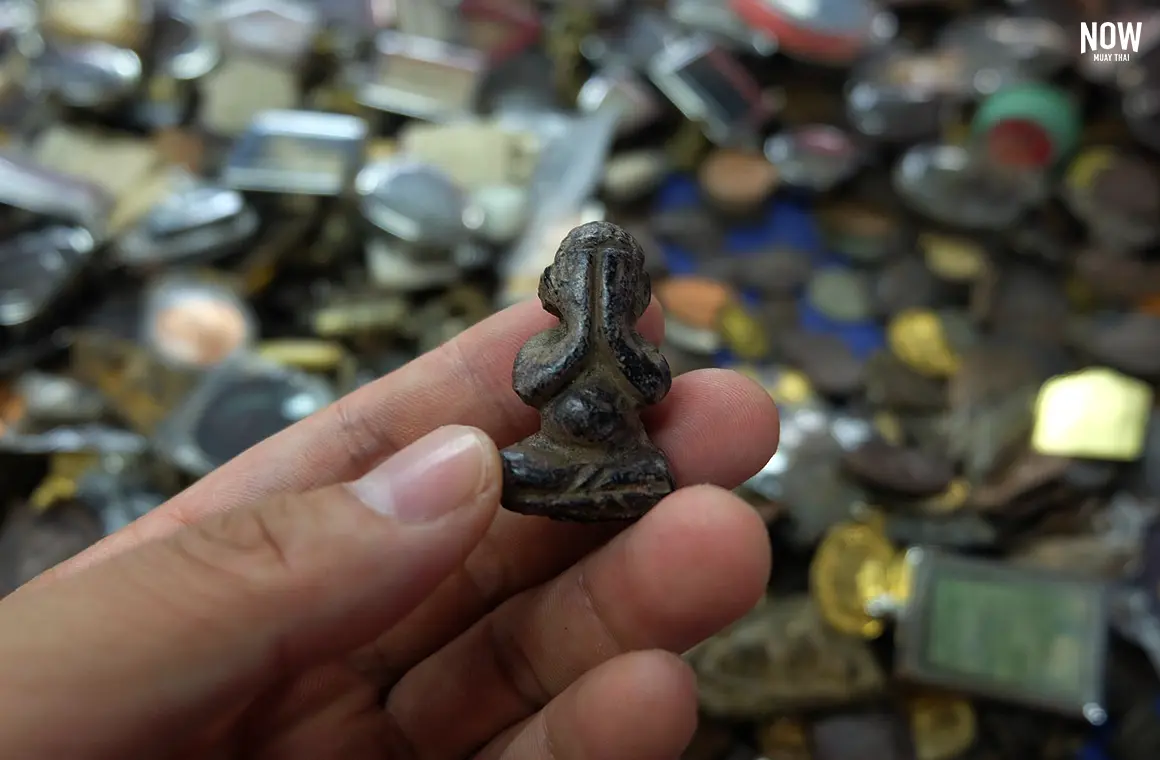 The Phra Phid Ta, or Buddha amulet, symbolizes mental peace and focus by "closing the eyes" to distractions and desires. Commonly worn by Muay Thai practitioners, it is believed to protect and enhance concentration, helping them block external disturbances and maintain focus, especially during training.
The Phra Phid Ta, or Buddha amulet, symbolizes mental peace and focus by "closing the eyes" to distractions and desires. Commonly worn by Muay Thai practitioners, it is believed to protect and enhance concentration, helping them block external disturbances and maintain focus, especially during training.
Phra Kruang, or sacred amulets, are an integral part of the spiritual practices in Muay Thai. These amulets are made from a variety of materials such as metal, clay, or even hair and fabric from revered monks. The amulets are blessed with mantras during ceremonial rituals to imbue them with spiritual power. Some amulets even contain sacred inscriptions and symbols designed to provide protection and invincibility.
Fighters often carry these Phra Kruang during their matches, using them as a shield against physical harm and negative energy. Some fighters even keep the amulet in their mouth during a fight, though this practice is less common due to safety concerns. The Phra Kruang is considered one of the most powerful spiritual protections, providing strength, resilience, and guidance throughout the fighter’s journey.
6. Rituals and Incantations
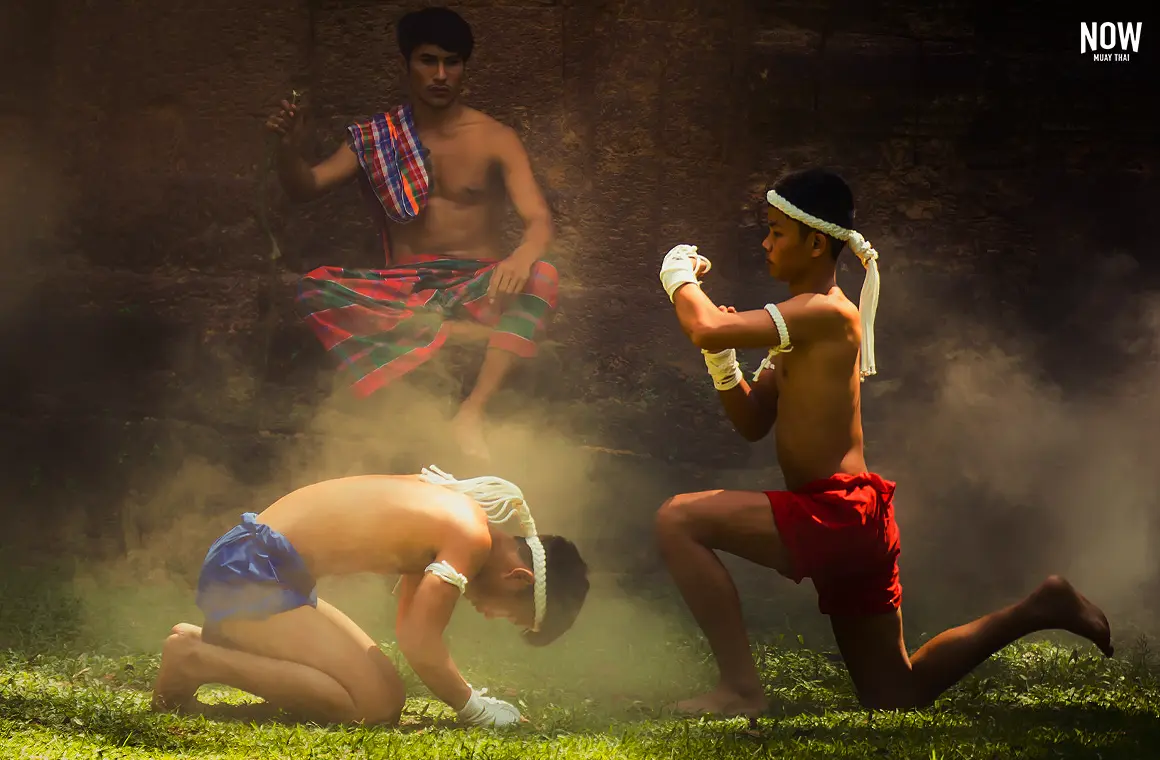 The Wai Kru ritual in Muay Thai is a deeply spiritual practice that helps focus the mind and honor the teacher. It is not only a moment of meditation, but also a reflection of the spirit of Muay Thai, connecting the practitioner to the teachings and traditions passed down through generations. This ceremony embodies respect, discipline, and the spiritual essence that forms the heart of Muay Thai.
The Wai Kru ritual in Muay Thai is a deeply spiritual practice that helps focus the mind and honor the teacher. It is not only a moment of meditation, but also a reflection of the spirit of Muay Thai, connecting the practitioner to the teachings and traditions passed down through generations. This ceremony embodies respect, discipline, and the spiritual essence that forms the heart of Muay Thai.
In Muay Thai, the spiritual side of the practice is not limited to the use of talismans and amulets. Fighters also engage in rituals and incantations to prepare mentally and spiritually for their fights. These include prayers and chants that are said to invoke the protection of spiritual forces and provide the fighter with mental clarity and focus.
Before a fight, many fighters chant specific mantras or use prayers to clear the mind, enhance focus, and protect themselves from harm. These spiritual practices are as important as physical training, allowing the fighter to enter the ring with a sense of calm and confidence.
The use of these amulets and charms goes hand-in-hand with spiritual training. Fighters often chant incantations before their matches, invoking spiritual guidance and protection to ensure a successful and safe fight.
The Soul and Spirit of Muay Thai
 Muay Thai is not just a martial art; it is a reflection of Thai culture and spirituality. Rooted in centuries of tradition, it emphasizes respect for the teacher and spiritual protection, with a deep connection between the mind, body, and soul, reflecting the essence of Muay Thai's spirit.
Muay Thai is not just a martial art; it is a reflection of Thai culture and spirituality. Rooted in centuries of tradition, it emphasizes respect for the teacher and spiritual protection, with a deep connection between the mind, body, and soul, reflecting the essence of Muay Thai's spirit.
Muay Thai is a unique martial art that goes beyond physical combat. It is a deeply spiritual practice, rooted in Thai culture and traditions, where respect for the teacher and spiritual protection are just as important as physical skill. Through its rituals, beliefs, and practices, Muay Thai teaches practitioners how to develop both the body and the mind, cultivating strength, discipline, and moral values. The connection between the fighter’s spirit and soul is central to the art, making it not just a sport but a way of life. Muay Thai remains a reflection of Thailand’s rich cultural heritage, and its spiritual side continues to be a vital part of the practice to this day.
If you're interested in exploring the spiritual and cultural side of Muay Thai, Nowmuaythai.com is the perfect resource for finding gyms and instructors who incorporate these traditions into their teachings. Whether you're looking to train for fitness, self-defense, or to connect with the rich history of Muay Thai, Nowmuaythai.com can guide you to the right place to start your journey.
Learn more about Muay Thai
Back








